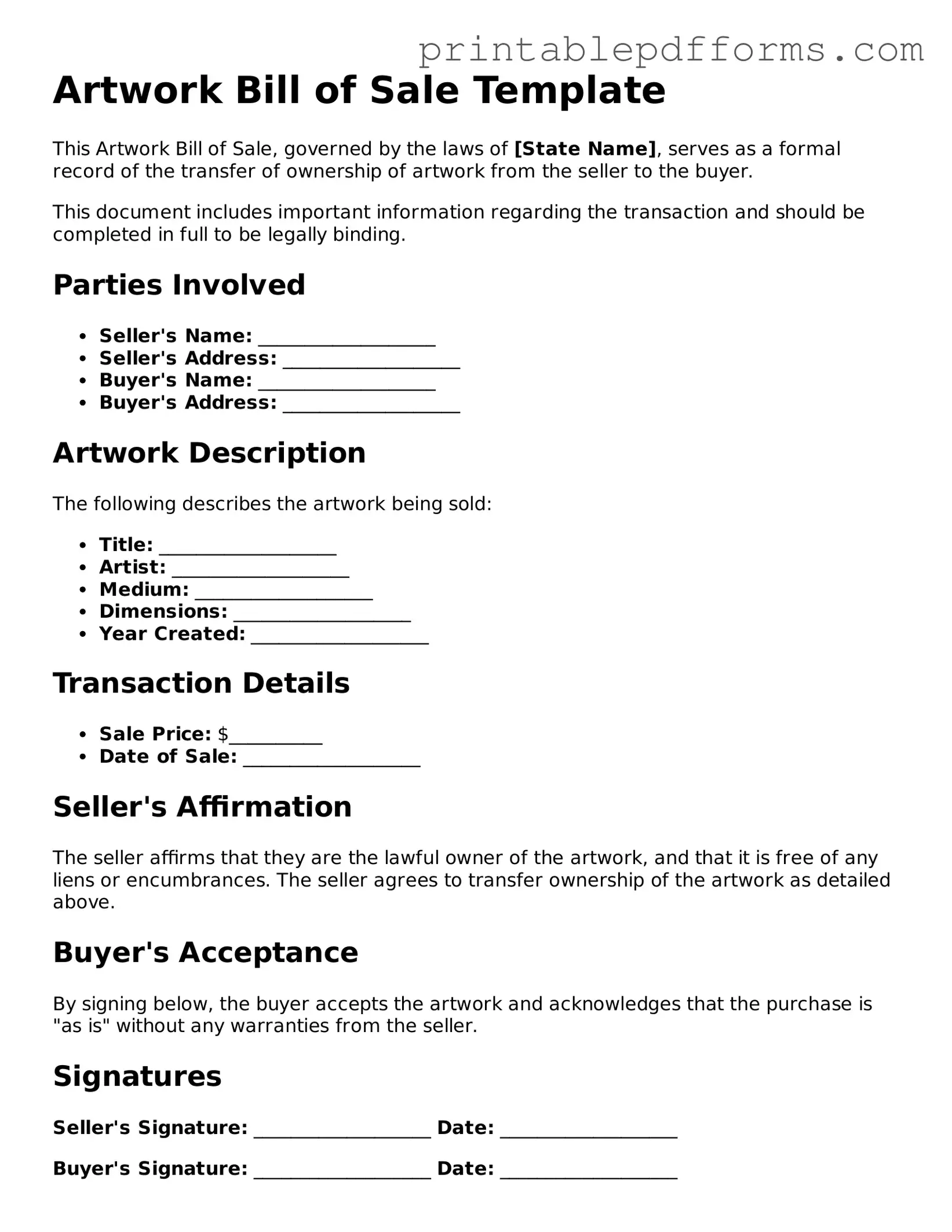Artwork Bill of Sale Template
This Artwork Bill of Sale, governed by the laws of [State Name], serves as a formal record of the transfer of ownership of artwork from the seller to the buyer.
This document includes important information regarding the transaction and should be completed in full to be legally binding.
Parties Involved
- Seller's Name: ___________________
- Seller's Address: ___________________
- Buyer's Name: ___________________
- Buyer's Address: ___________________
Artwork Description
The following describes the artwork being sold:
- Title: ___________________
- Artist: ___________________
- Medium: ___________________
- Dimensions: ___________________
- Year Created: ___________________
Transaction Details
- Sale Price: $__________
- Date of Sale: ___________________
Seller's Affirmation
The seller affirms that they are the lawful owner of the artwork, and that it is free of any liens or encumbrances. The seller agrees to transfer ownership of the artwork as detailed above.
Buyer's Acceptance
By signing below, the buyer accepts the artwork and acknowledges that the purchase is "as is" without any warranties from the seller.
Signatures
Seller's Signature: ___________________ Date: ___________________
Buyer's Signature: ___________________ Date: ___________________
Witness
If applicable, a witness signature is recommended for added validity.
Witness's Name: ___________________
Witness's Signature: ___________________ Date: ___________________
Please keep a copy of this bill of sale for your records.
